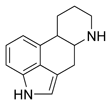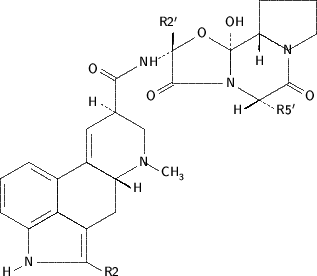Clinical is for one year Quiz questions are based on selected articles in this issue of American Family Physician. Answers appear in this issue. AFP has been reviewed by the American Academy of Family Physicians as having content acceptable for Prescribed credit. Term of approval from the beginning distribution date of February 15, 2005. This issue has been reviewed and is acceptable for up to 3.5 Prescribed credits. One half of one credit conforms to AAFP criteria for evidence-based continuing medical education (EB CME) clinical content. The amount of CME has been doubled to reflect two-for-one credit for the EB CME portion only. When reporting CME credits, AAFP members should report total Prescribed credits earned for this activity. It is not necessary for members to label credits as EB CME for reporting purposes.
The AAFP is accredited by the Accreditation Council for Continuing Medical Education (ACCME) to provide CME for physicians.
The AAFP designates this educational activity for a maximum of 3.5 Category 1 credits toward the American Medical Association Physician's Recognition Award (AMA/PRA). Each physician should claim only those credits that he or she actually spent in the activity.
AAFP Credit
Each copy of AFP contains a Clinical Quiz answer card. AAFP members may use this card to obtain the designated number of Prescribed credit hours for the year in which the card is postmarked.
AMA/PRA Category 1 Credit
AAFP members who satisfy the Academy's CME requirements are automatically eligible for the AMA/PRA.
Physicians who are not members of the AAFP are eligible to receive the designated number of credits in Category 1 of the AMA/PRA on completion and return of the Clinical Quiz answer card. AFP keeps a record of AMA/PRA Category 1 credits for nonmember physicians. This record will be provided on request; however, nonmembers are responsible for reporting their own Category 1 CME credits when applying for the AMA/PRA or other certificates or credentials.
For health care professionals who are not physicians and are AFP subscribers, a record of CME credit is kept by AAFP and will be provided to you on written request. You are responsible for reporting CME credits to your professional organization.
NOTE: The full text of AFP is available online (http://www.aafp.org/afp), including each issue's Clinical Quiz. The table of contents for each online issue will link you to the Clinical Quiz. Just follow the online directions to take the quiz and, if you're an AAFP member, you can submit your answers for CME credit.
Instructions
(1) Read each article, answer all questions on the quiz pages, and transfer your answers to the Clinical Quiz answer card (bound into your copy of AFP). This will help you avoid errors and permit you to check your answers against the correct answers.
(2) Mail the Clinical Quiz answer card within one year (by February 28, 2006). The bar code on the answer card contains your identification for CME credit hours.
Before beginning the test, please note: Each Clinical Quiz includes two types of questions: Type A and Type X.
Type A questions have only one correct answer and may have four or five choices. Here is a typical Type A question:
Q1. Most allergic reactions to foods are:
[] A. Due to IgA deficiency.
[] B. Due to IgG and IgM antibodies.
[[check]] C. IgE-mediated.
[] D. Due to enzyme deficiencies.
[] E. Due to toxins.
Type X questions may have one or more correct answers. They are multiple true-false questions with four options. Here is a typical Type X question:
Q2. Causes of varicosities in pregnancy include:
[[check]] A. Hormonal changes.
[[check]] B. Venous compression.
[[check]] C. Familial tendency.
[[check]] D. Prolonged sitting and standing.
Clinical Quiz questions are written by the associate and assistant editors of AFP.
Type A Questions
Each question has only one correct answer.
Articles
Care of Cancer Survivors (p. 699)
Q1. Which one of the following is part of the follow-up recommended by the National Comprehensive Cancer Network (NCCN) for a patient with breast cancer three years after surgery?
[] A. Annual clinical breast examination.
[] B. Monthly breast self-examination.
[] C. Annual physical examination.
[] D. Mammography at six-month intervals.
Q2. One year after a patient has resection of colon cancer, a full assessment (including colonoscopy) reveals no evidence of recurrence. Assuming the patient remains symptom free, which one of the following statements correctly reflects cur-rent NCCN recommendations for care in the next year?
[] A. History and physical examination should be reviewed every three months.
[] B. Carcinoembryonic antigen levels should be rechecked after six months.
[] C. Colonoscopy should be repeated every year.
[] D. Chest radiographs should be obtained after one year.
Management of Cluster Headache (p. 717)
Q3. Which one of the following prophylactic treatments for episodic cluster headache is best supported by evidence from clinical studies?
[] A. Sumatriptan.
[] B. Verapamil.
[] C. Prednisone.
[] D. Ergotamine.
Treatment of Panic Disorder (p. 733)
Q4. Which one of the following time periods is the correct duration for antidepressant therapy in patients with panic disorder?
[] A. No more than three months.
[] B. No more than six months.
[] C. At least six months after the patient is symptom free.
[] D. Lifetime treatment.
Diagnostic Approach to Palpitations (p. 743)
Q5. Which one of the following statements about diagnostic yield in the evaluation of palpitations is correct?
[] A. It is higher with Holter monitors than with event monitors.
[] B. It is higher with event monitors than with Holter monitors.
[] C. It is similar with Holter monitors and event monitors.
[] D. It is unknown with Holter monitors and event monitors.
Q6. Which one of the following groups includes the most common causes of palpitations?
[] A. Medications and anxiety/panic disorder.
[] B. Arrhythmias and other cardiac causes.
[] C. Arrhythmias and anxiety/panic disorder.
[] D. Medications and arrhythmias.
U.S. Preventive Services Task Force EB CME Recommendation Statement
Screening for Ovarian Cancer: Recommendation Statement (p. 759)
Q7. Which one of the following statements about ovarian can-cer screening is correct?
[] A. The incidence of ovarian cancer in the general population is high.
[] B. Approximately 2 percent of average-risk women with an abnormal screening test actually have ovarian cancer.
[] C. Early detection of ovarian cancer through screening leads to significant improvements in mortality rates.
[] D. The majority of women with a positive screening test will have ovarian cancer.
[] E. Transvaginal ultrasonographic screening does not detect ovarian cancer at an earlier stage than clinical detection.
Type X Questions
Each question has one or more correct answers.
Articles
Care of Cancer Survivors (p. 699)
Q8. Which of the following predict recurrence of prostatic cancer following definitive treatment?
[] A. Pretreatment prostate-specific antigen (PSA) level.
[] B. Post-treatment PSA velocity.
[] C. Gleason score.
[] D. Cancer staging.
Management of Cluster Headache (p. 717)
Q9. Which of the following statements about the treatment of acute cluster attacks is/are correct?
[] A. Inhaled oxygen is one of four treatments for acute attacks that were demonstrated effective in randomized controlled trials.
[] B. In studies, intranasal sumatriptan relieved symptoms in more than 70 percent of patients.
[] C. Intranasal sumatriptan was effective in relieving cluster pain.
[] D. In a clinical trial, a subcutaneous dose of 12 mg of sumatriptan was more effective than a dose of 6 mg.
Treatment of Panic Disorder (p. 733)
Q10. Which of the following statements about the use of benzodiazepines in patients with panic disorder is/are correct?
[] A. Benzodiazepines have a rapid onset of action.
[] B. Benzodiazepines are not recommended for use in patients with comorbid depression.
[] C. Cognitive behavior therapy can be useful in patients who are discontinuing benzodiazepine therapy.
[] D. Benzodiazepines are especially useful in patients with depression.
CME Quality Survey
Please answer the following questions to help us monitor the quality of AFP's CME material on an ongoing basis. Mark your answers on this issue's quiz card. We would appreciate hearing any suggestions you have for improving the CME experience offered through AFP. See the directory on page 633.
Q1. Which of the following articles covered in this quiz provide information that you find useful? (On the answer card, please circle all that apply.)
[] A. Care of Cancer Survivors (p. 699).
[] B. Management of Cluster Headache (p. 717).
[] C. Treatment of Panic Disorder (p. 733).
[] D. Diagnostic Approach to Palpitations (p. 743).
[] E. Screening for Ovarian Cancer (p. 759).
Q2. In general, how clear was the presentation of the information in these articles? (On the answer card, please circle one number: 5 = extremely clear; 0 = extremely unclear.)
Q3. Thinking of all the issues of AFP that you've seen recently, please rate the overall quality of AFP as a vehicle for CME in the clinical aspects of practice. (On the answer card, please circle one number: 5 = excellent; 0 = poor.)
Answers to This Issue's Clinical Quiz
Q1. B
Q2. A
Q3. B
Q4. C
Q5. B
Q6. C
Q7. B
Q8. B, C, D
Q9. A, C
Q10. A, B, C
COPYRIGHT 2005 American Academy of Family Physicians
COPYRIGHT 2005 Gale Group




